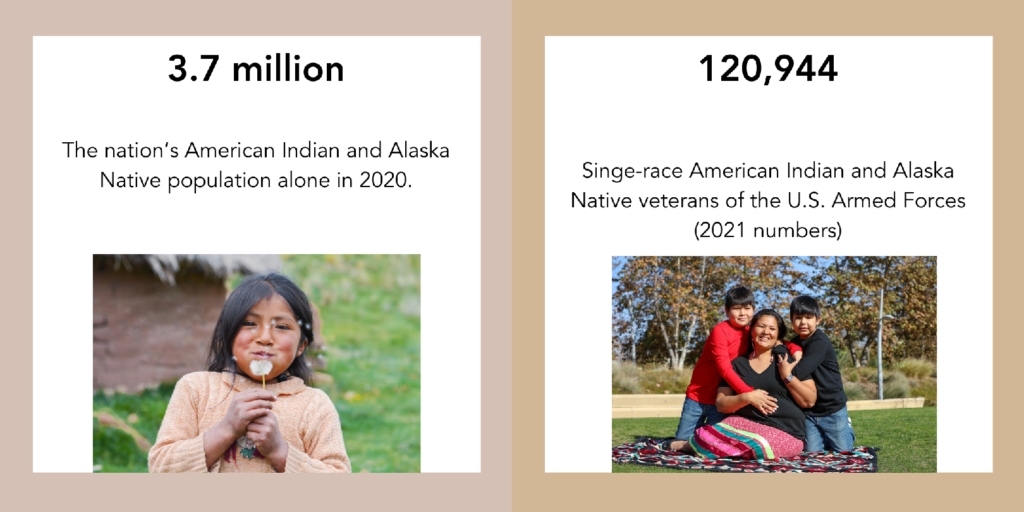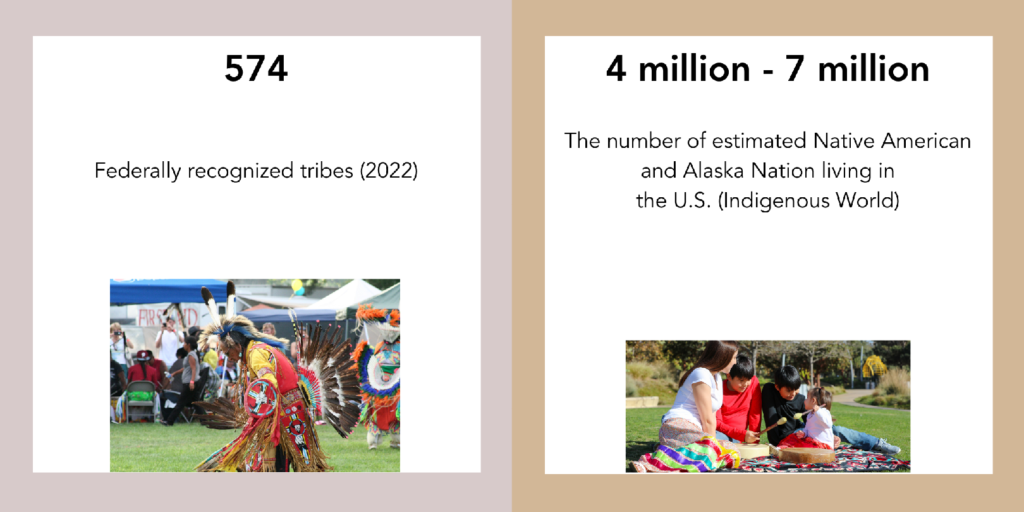“We Are Still Here”
This was a headline this week in Native News Online, and it’s also part of the title of a book, “We Are Still Here!: Native American Truths Everyone Should Know.” The headline ran with a story by Levi Rickert, the news site’s founder, publisher, and editor. He noticed that Native Americans are often spoken about in the past tense, as though their stories and lives were sucked into the ether.
Far, far from true. So, as Native American Heritage month begins, Rickert set about dispelling that notion and focusing on the positives.
In the U.S. overall, the American Indian and Alaska Native population is 3.7 million people, Rickart wrote. There are 574 federally recognized tribes, and 120,944 single-race American Indian and Alaska natives can be counted as veterans of the U.S. Armed Forces.

But some numbers offer a somber look at life as a Native American living in America in 2022. Figures from the National Community Reinvestment Coalition (NCRC) show that while incomes among Native Americans and Alaska Native populations sometimes outpace others – $43,825 as compared to African American households’ median incomes of $41,935 – the median remains well below that of white Americans, who have a median household income of $68,785. For those living on a reservation, however, the average income hovered around $17,000.
Still, 2018 U.S. Census Bureau numbers show a 25% poverty rate among Native Americans— higher than other communities in the U.S. The NCRC shows the poverty rate among African Americans is 20.8%, 17.6% among Hispanic Americans, and 8.1% among white populations. However, because of a lack of specificity in recording, Census data from 2019 and 2020 do not show either Alaska Natives or Native Americans as definitive populations.

Numbers on food insecurity vary, with Feeding America stating that one in five Native Americans live with food insecurity, and a study by the Native American Agricultural Fund shows that about half of all Native Americans struggled with hunger during the height of the pandemic.
This month is an opportunity to learn more about the contributions and histories of the Indigenous and Native cultures of America, and where those histories intersect in the present. You could find a book written by a Native American author. A good starting place could be the above-mentioned “We Are Still Here,” a companion book to the myth-busting and historically accurate “We Are Grateful: Otsaliheliga.” Or you could investigate indigenous dishes to add to your dinner table. The 2021 multimedia cookbook “A Gathering Basket” was written by Indigenous chefs who noticed that histories of foods usually didn’t include Native Americans who originated many foodways in the U.S.
Locally, Mecklenburg Ministries’ annual Community-wide Interfaith Thanksgiving service will be Indigenous-led, and members of Native American groups of the Carolinas – Catawba, Tuscarora, and Lumbee – will incorporate traditional and newer traditions. The service, “Moving Beyond Myth: A Justice-Centered Thanksgiving Service,” will be on Tuesday, November 27, from 7:00 to 9:00 p.m., and it will “address the mythmaking around the traditional Thanksgiving story, offer a truer and more complete story, and suggest actions toward justice” that those in attendance can take. All are welcome, but registration is suggested.
